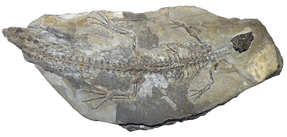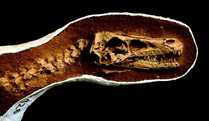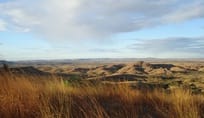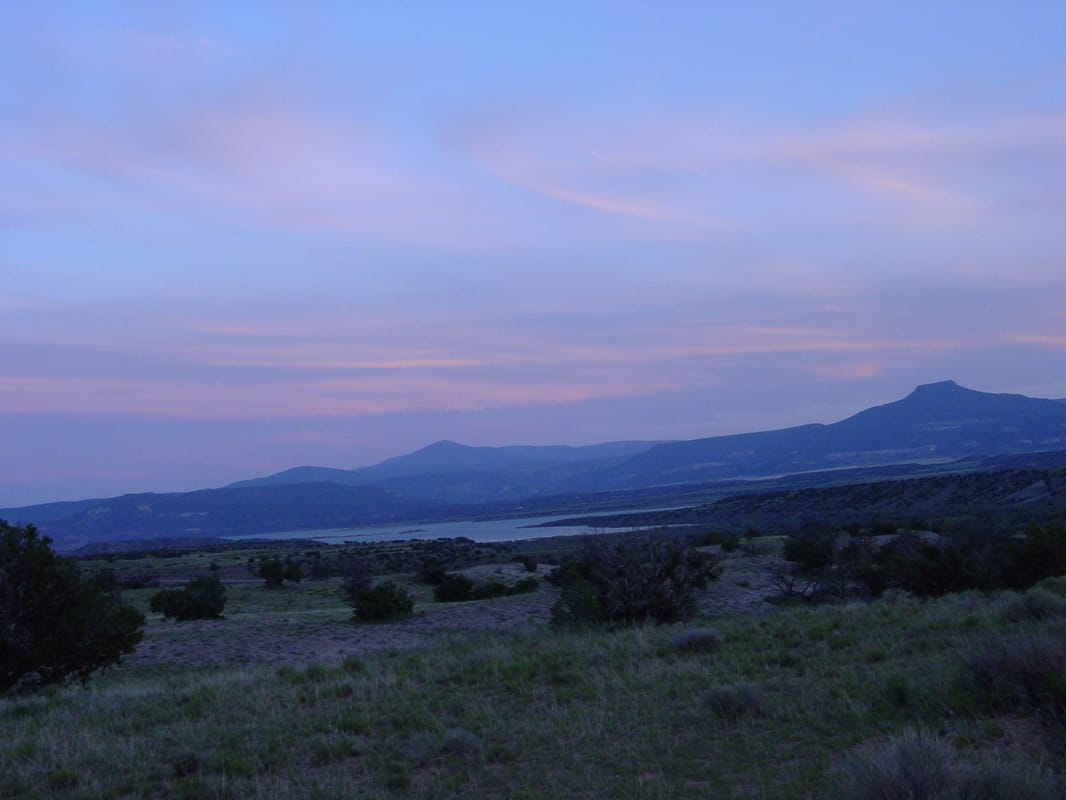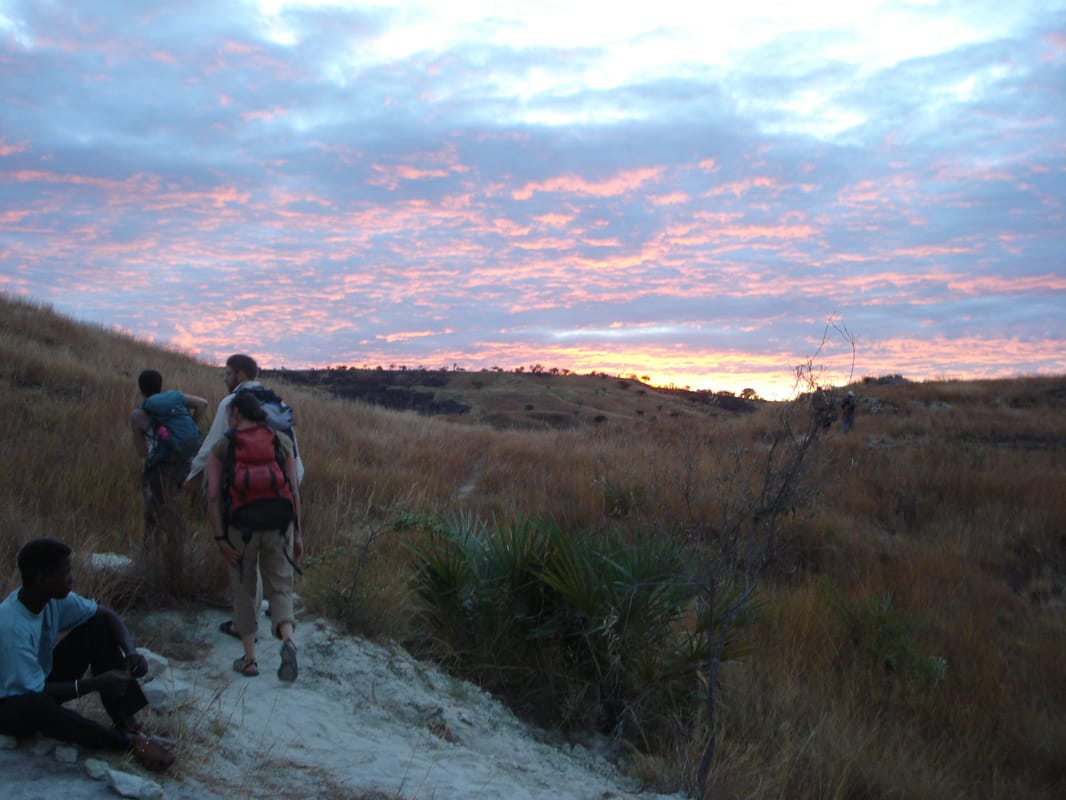|
Crocodylomorph Evolution
|
Theropod Evolution
|
Triassic of New Mexico
|
Cretaceous of Madagascar
|
Crocodylomorph Evolution
Crocodylomorphs (crocodylians and their extinct relatives) have a rich fossil record going back to the Late Triassic. They have filled niches ranging form fully terrestrial to fully pelagic, are known from every continent, and include the few marine reptiles that survived the K-Pg mass extinction.
PhylogeniesBy expanding morphological datasets and taxon sampling we are continuing to develop the next generation of croc phylogenies. Current work on the origin of Neosuchia was supported by the National Science Foundation.
|
FossilsThrough fieldwork and museum collection work supported by the National Science Foundation, we are adding new data to the diverse archosaur fossil record.
|
MacroevolutionSupported by funds from the National Science Foundation, we are exploring dynamics of phenotypic evolution within neuroanatomic and skeletal variation across multiple habitat shifts across 200 million years of evolutionary history.
|
Theropod Evolution
With ongoing fieldwork in the Late Triassic of New Mexico and the Late Cretaceous of Madagascar, Turner Lab is focused on the early origins of the clade as well as the transition between non-avian and avian theropods.
DeinonychosauriaDromaeosaurids and troodontids have a diverse history spanning 135 millions ago until the K/Pg extinction 65 millions ago. These two groups are of crucial importance for studies of bird origins. In particular I am interested in the sequence and pattern of acquisition of traits associated with flight.
|
Theropod OriginsDinosaurs originated in the Late Triassic Period ~ 230 mya. Their origins marked a replacement of faunas previously dominated by basal archosaur lineages such a aetosaurs and “rauisuchians”. Until recently the only evidence of dinosaur precursors was from the Middle Triassic of Argentina. Discoveries at the Hayden Quarry near Ghost Ranch are providing a window into the early evolution of dinosaurs and their immediate precursors.
|
Body SizeTheropod dinosaurs have exhibited a wide range of body sizes. From relatively small animals like Coelophysis early in the clade’s history to the largest terrestrial carnivores like Tyrannosaurus rex to the smallest of humming birds, theropods have evolved to the extremes of body size. I am interested broadly in how body size among archosaurs changes in response to their ecological shifts. Theropods are just one good example.
|
In collaboration with Sterling Nesbitt (Virginia Tech), Randall Irmis (University of Utah) and Nathan Smith (Natural History Museum of LA County), over a decade of work at the Hayden Quarry has yieled well over 15,000 specimens and new species of dinosauromorph, basal theropod, and a diverse reptile fauna. The faunal and phylogenetic framework we are developing is essential for our ongoing work to understand broader macroevolutionary patterns. The evolutionary trajectory of early Mesozoic archosaurs has become increasingly important because of its relevance for discovering general features of evolutionary radiations and faunal change. Through collaboration with Jen Olori (SUNY Oswego) and Adam Pritchard (Yale) we have expanded into the microvertebrate record.
This work is supported by the National Science Foundation and National Geographic Society.
This work is supported by the National Science Foundation and National Geographic Society.
For nearly a decade I have participated in excavating and studying an exceptional archosaur fauna from the Late Cretaceous of Madagascar. Currently, this is a collaboration with Dave Krause (DMNS), Joe Sertich (DMNS), Pat O'Connor (Ohio University), Kristi Curry-Rogers, and Ray Rogers (Macalester College) that aims to expand the collection of predominately terrestrial Late Cretaceous vertebrates from northern Madagascar. My research interests focus on the exceptional, and sometimes bizarre, crocodyliform and basal-bird fossils from this region. Malagasy crocodyliforms show nearly unprecedented levels of species diversity. Results from my prior work include morphological and phylogenetic analyses of the notosuchian crocodyliforms from Madagascar while ongoing work focuses on the intriguing neosuchian fossils. Moreover, the recently discovered fossil avifauna from Madagascar represent a >100% increase in the number of pre-Cenozoic birds known from Gondwana. It is the most size- and phylogenetically-diverse Cretaceous avifauna from the southern hemisphere.
This work is supported by the National Science Foundation and National Geographic Society.
This work is supported by the National Science Foundation and National Geographic Society.
